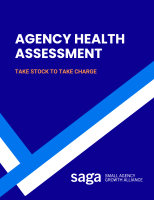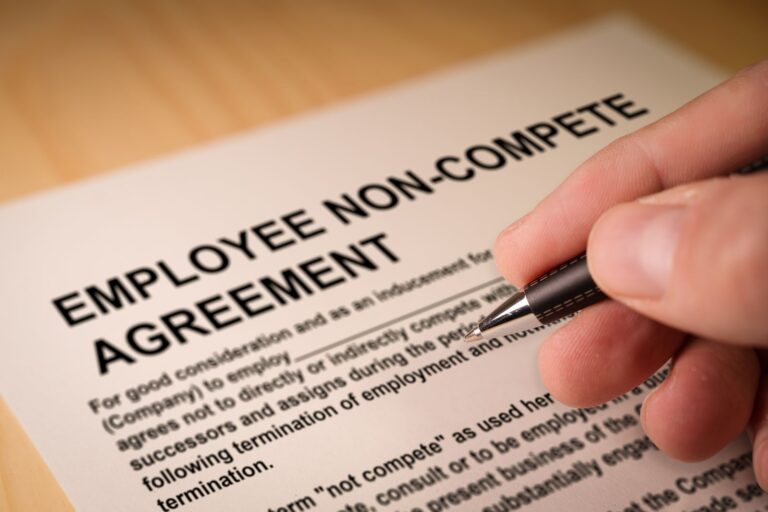I often get asked some variation of the question: “what’s your best advice for someone who wants to grow their agency?”
It is difficult to boil it all down to something that simple. After all, running your own business is a very personal and complex process. It evolves over time. There is no one-size-fits-all answer.
But that doesn’t stop me from offering my perspective.
After I dispense with my typical warnings and disclaimers (“don’t pay too much attention to experts” and “every agency owner is different”), I usually offer some variation of the following five suggestions.
1. Know what you want.
If you don’t have any idea what you are trying to achieve with your business for you personally it is very difficult to shape your agency correctly.
You need to figure out how much you want to earn, how many hours you want to work, what type of work you want to do, and what your long-term goals might be.
Once you have clarity around your objectives, it becomes much easier to assess individual business decisions and make the right choice.
Too often inertia takes over and agency owners do what they think that they are “supposed” to do or they mimic what some other owner they know is doing.
Let me be clear: there is no reason to take on the risk and stress of running your own agency if it doesn’t help you to achieve your own short- and long-term goals.
You need to be honest with yourself about the interaction between your personal and business goals. Then you need to share with your team the strategic roadmap that gets the business where you want it to be. They don’t need to know your personal goals, they just need to know the business ones that drive you to them.
Get everyone pulling in the same direction and you are much more likely to have the business that delivers satisfaction for you — however you may define it.
2. Define your ideal clients.
Who do you want to work with? What client work can you do profitably? Which sales are easier to make?
Many agencies have no description of ideal clients beyond “whoever pays.” Others have a definition that is far too broad.
The more specific your understanding of what good clients — and bad clients — look like for your specific agency, the more likely you are to accelerate growth.
Bad clients hold back growth. They sap energy from your team, and they prevent you from focusing on getting more good clients.
Drill deep into your experience to list the characteristics of good-fit vs bad-fit clients. Continue to keep this list updated so that you can say “no” to work that doesn’t make sense and spend your time on higher-value opportunities.
3. Treat yourself as a client.
Many agency owners are not natural-born salespeople. It’s one of the reasons that I often hear “referrals” as the top driver of new business.
The reality is that even referrals need a little help. Getting new business for your agency is often about being in the right place at the right time.
You need to have your agency’s name on the tip of the tongue of a prospective client when they realize that they might have a need.
That means that you need to steadily build — and maintain — an awareness campaign that targets your ideal clients.
The logical way to do this is to start with the services that you provide to your clients and look inward. Can you leverage those skills to help drive new business?
You should have an actual account manager dedicated to your own agency’s communications and marketing efforts. Make sure that they understand the agency itself is just as important as any other client in their portfolio.
Don’t let the “cobbler’s kids” defense prevent you from doing what you need to do to put your agency on the radar of your ideal clients.
4. Track project costs so you know client profitability.
Usually when I ask an agency owner for their list of the 3 most profitable clients, they end up telling me the 3 that pay the most.
That is rarely the case.
Often the highest-paying agency clients have shockingly low profit margins. There are many reasons for that, but for the purposes of this discussion, the important takeaway is that you need to set project-level budgets and then track actual expenses against it so that you know what your most profitable work is.
Knowing how you actually make money helps you to refine your ideal client definition (see above). It also helps you to identify areas where you could improve efficiency or avoid over-delivery to generate better bottom-line results.
Of course, this means that you’re going to need to have some form of time-tracking within your agency. Whether it is old-fashioned timesheets or some other method of estimating the actual labor hours spent on a particular project, you need to have this information to make intelligent decisions about what work to do — and how much to charge for it.
Don’t make the mistake of relying on agency-wide profit figures because that can mask lots of sins at the client and project level that could be reducing your margins and holding back growth.
5. Hold weekly 1-on-1’s with all agency staff.
Every employee of your agency should be having a recurring meeting with their direct manager every single week. No exceptions.
Few things can make a bigger difference in the performance of an agency than these regularly-scheduled individual conversations.
In these discussions, you will uncover things that will help you improve client retention, team satisfaction, and innovation.
Even if you talk with someone every day, you still need to have a weekly time set aside as their manager. It’s an opportunity for employees to raise issues or share thoughts that they didn’t feel merited a separate conversation.
You will reveal lots of opportunities, but you will also get early warning of things that could become problems down the road if they are not addressed until they rise to the level of deserving its own meeting.
Sometimes I get pushback that these meetings would eat up too much time. Usually that means that the owner or manager(s) have too many direct reports.
If you have 5 or fewer direct reports, then there shouldn’t be any problem to fit each of them in for 30 minutes every week.
Do this consistently agency-wide for 3 months and I guarantee that you will see tangible results.
Conclusion
While these five tips won’t likely revolutionize your agency business, they should give you some things to think about as you consider how to improve its performance.
Ultimately, every agency owner needs to listen to the perspectives of friends, peers, and “experts” and then figure out what will work for their own individual circumstances.










